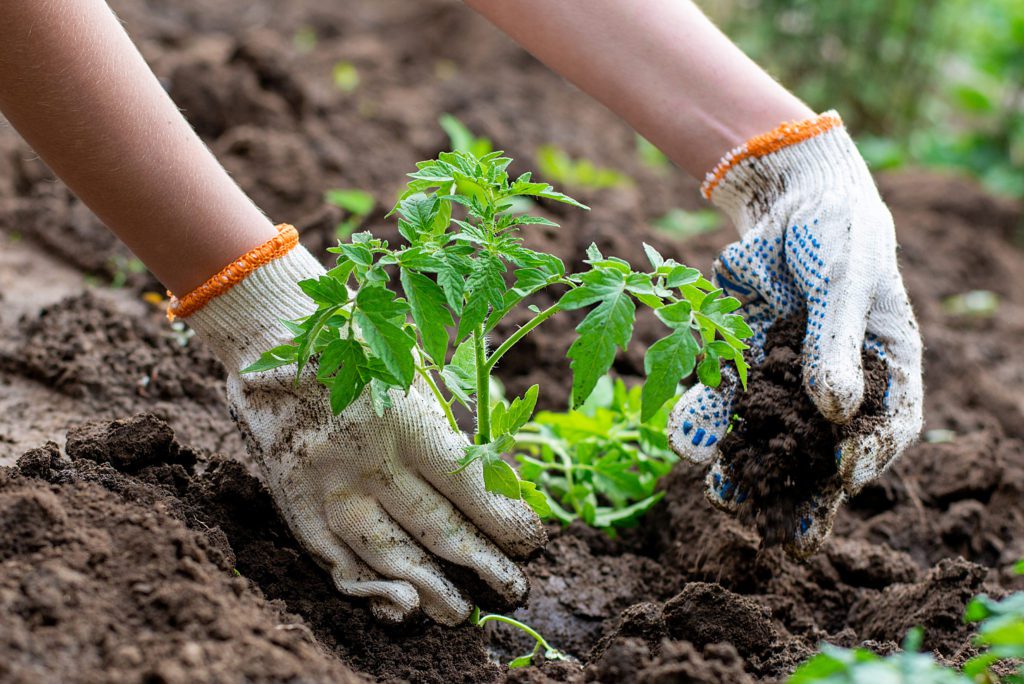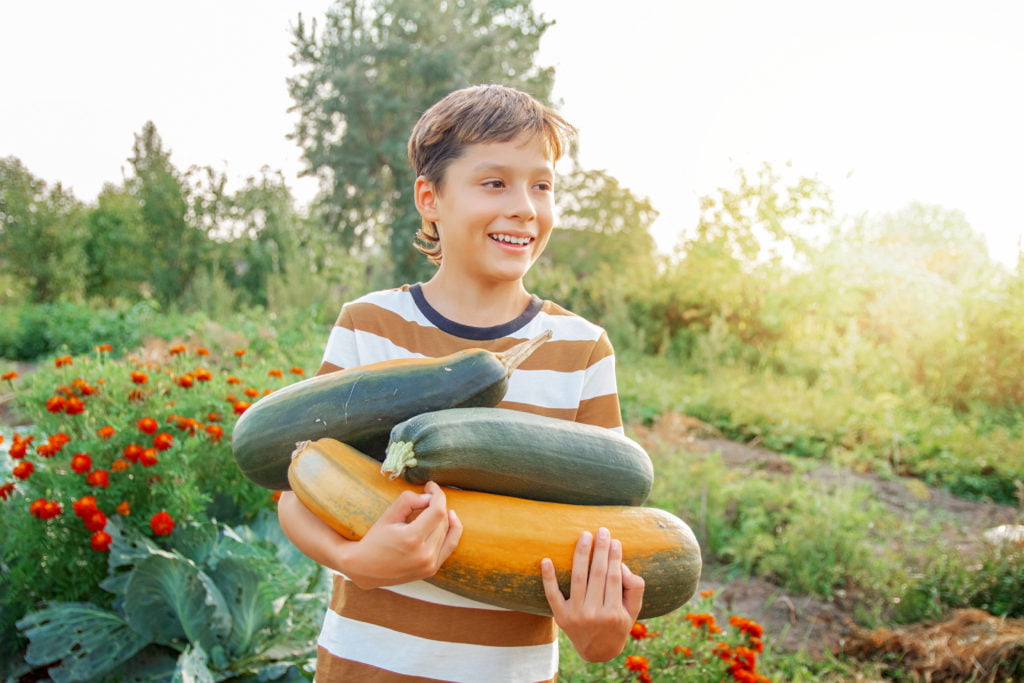Best Vegetables for a Fall Garden
There are a lot of benefits to growing a fall garden. One of the most obvious is that you can continue to harvest fresh produce well into the fall months, when many other gardens have already gone dormant. This can provide you with some much-needed variety in your diet, as well as save you money on groceries.
In addition, healthy vegetables tend to be less work than growing them during the spring and summer. The temperatures are usually milder, so you don’t have to water or fertilize as often. And since many pests are inactive in the fall, there is less risk of your plants being damaged by insects or diseases.

Best Plants for a Fall Garden
1. Arugula
Arugula is a leafy green vegetable that is popular in salads. It has a peppery flavor and is high in nutrients, including vitamins A, C, and K, as well as potassium and calcium. Arugula is a good choice for a fall garden because it can tolerate cooler temperatures and is resistant to pests.
2. Beets
Beets are a root vegetable that can be cooked or pickled. They are high in vitamins and minerals, including iron and magnesium. Beets are a good choice for a fall garden because they can tolerate cooler temperatures and have a long growing season.
3. Broccoli
Broccoli is a nutrient-rich vegetable that is high in vitamins C and K, as well as fiber. It can be eaten raw or cooked, and is often used in salads, stir-fries, and soups. Broccoli is a good choice for a fall garden because it can tolerate cooler temperatures and is resistant to pests.
4. Brussels Sprouts
Brussels sprouts are a nutrient-rich vegetable that is high in vitamins C and K, as well as fiber. They can be eaten raw or cooked, and are often used in salads, stir-fries, and soups. Brussels sprouts are a good choice for a fall garden because they can tolerate cooler temperatures and have a long growing season.
5. Cauliflower
Cauliflower is a cruciferous vegetable that is high in vitamins C and K, as well as fiber. It can be eaten raw or cooked, and is often used in salads, stir-fries, and soups. Cauliflower is also high in antioxidants, which can help protect the body from disease. It is also a good source of omega-3 fatty acids, which are beneficial for the heart and brain.
6. Kale
Kale is a leafy green vegetable that is popular in salads. It has a peppery flavor and is high in nutrients, including vitamins A, C, and K, as well as potassium and calcium.
7. Lettuce
Lettuce is a popular leafy vegetable that can be grown in a container garden for the fall season. It is a good choice for a fall garden because it can tolerate cooler temperatures and is resistant to pests. Lettuce can be planted in late summer and will continue to grow well into the fall months. It can be harvested fresh and used in salads or other dishes.
8. Mustard Greens
Mustard greens are a healthy vegetable to include in your fall garden. They are high in nutrients and antioxidants, which can help protect the body from disease. They are also a good source of omega-3 fatty acids, which are beneficial for the heart and brain.
9. Radishes
Canning radishes is a great way to preserve their flavor and nutritional value. Radishes are a healthy vegetable that is high in vitamins C and K, as well as fiber. They can be eaten raw or cooked, and are often used in salads, stir-fries, and soups.
10. Spinach
Spinach is a healthy vegetable that is beneficial for eye health. It contains lutein and zeaxanthin, which are antioxidants that can help protect the eyes from disease. Lutein and zeaxanthin can also help improve vision and reduce the risk of age-related macular degeneration. It is high in nutrients, including vitamins A, C, and K, as well as potassium and calcium.
11. Pumpkins
Pumpkins are a popular fall vegetable that can be used in a variety of dishes. There are many different varieties of pumpkins, and each one has its own unique flavor and texture. Some of the most popular types of pumpkins include:
Butternut squash: Butternut squash is a type of pumpkin that is high in nutrients, including vitamins A, C, and E, as well as fiber. It has a sweet flavor and can be used in soups, stews, and other dishes.
Pie pumpkins: Pie pumpkins are a type of pumpkin that is smaller than other types of pumpkins. They are often used to make pumpkin pies because they have a milder flavor and a softer texture than other types of pumpkins.
Jack-o’-lantern pumpkins: Jack-o’-lantern pumpkins are the type of pumpkin that is most commonly used to make Halloween decorations. They have a thick skin and a sweet, orange flesh.
12. Sunflowers
The sunflower is a tall, flowering plant that is native to North America. It is often used as an ornamental plant because of its bright yellow flowers. Sunflowers are also a good source of nutrients, including vitamins A, B, and C, as well as potassium and zinc.
When most people think of sunflowers, the first thing that comes to mind is the large, yellow flower head. However, the stem and leaves of the sunflower can also be eaten. The stem is crunchy and has a slightly sweet flavor. The leaves are tender and have a mild flavor that is similar to spinach.
Sunflowers are best planted in full sun and can grow up to 12 feet tall. They are annual plants, which means they die after one growing season. Sunflowers are easy to grow and can be planted from seed.
14. Carrots
Carrots are a root vegetable that is high in nutrients, including vitamins A, B, and C, as well as potassium and magnesium. They can be eaten raw or cooked, and are often used in salads, stir-fries, and soups. Carrots are also a good source of fiber.

Carrots can be planted in the spring or fall. They prefer cool weather and will not do well in hot, humid conditions. Carrots can be harvested after about two months of growth. The best way to store carrots is to keep them in a cool, dark place.
Fertilizing your Fall Garden
Fall is a great time to fertilize your garden. Fertilizing your plants helps them to grow strong and healthy and can improve the flavor and nutritional value of the fruits and vegetables that they produce.
There are many different types of fertilizer available, and it can be difficult to know which one is best for your garden. The best way to choose a fertilizer is to read the label and make sure that it matches the needs of your plants.
Organic fertilizers are made from natural ingredients, such as animal manure, fish emulsion, bone meal. They are slow-release fertilizers, which means that they release nutrients over a period of time. This makes them a good choice for plants that need a steady supply of nutrients.
Inorganic fertilizers are made from synthetic ingredients, such as ammonium nitrate or potassium chloride. They are fast-release fertilizers, which means that they release nutrients all at once. This makes them a good choice for plants that need a quick boost of nutrients.
Both organic and inorganic fertilizers come in liquid or powder form. Liquid fertilizers are easy to use and can be applied with a watering can or spray bottle. Powder fertilizers must be mixed with water before they can be used.
No matter what type of fertilizer you choose, it is important to follow the directions carefully. Fertilizing your plants too much can damage them, and too much nitrogen can cause them to produce excessive amounts of foliage at the expense of fruit or vegetable production.

Growing a fall garden can provide you with fresh, healthy vegetables that are packed with nutrients. Fall is the perfect time to plant a garden, as the cooler temperatures are ideal for many vegetables. So, what are you waiting for? Start planning your fall garden today!






